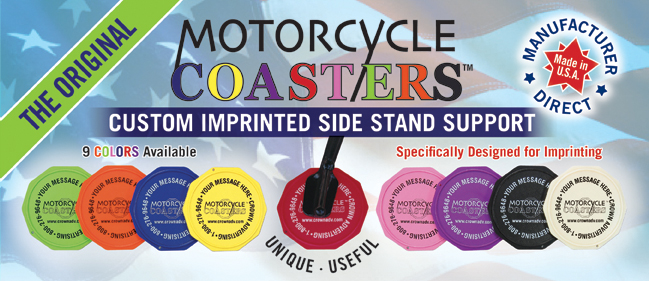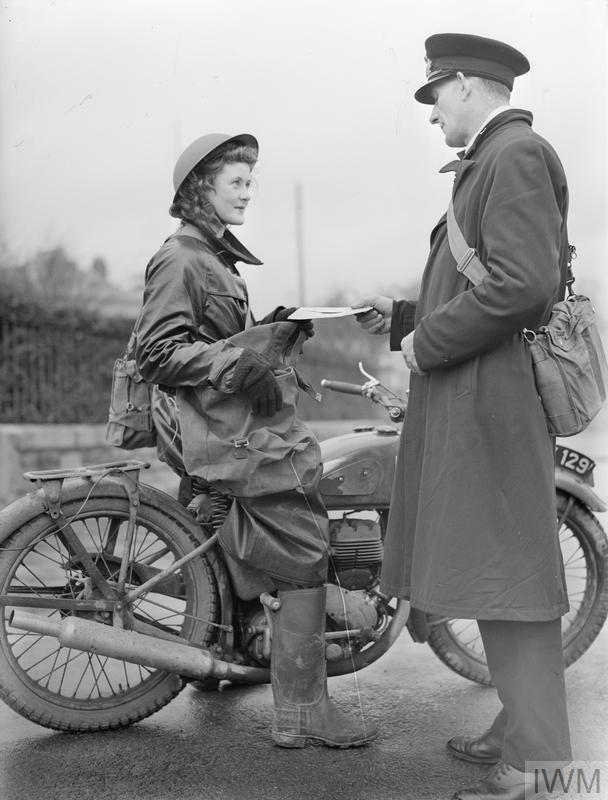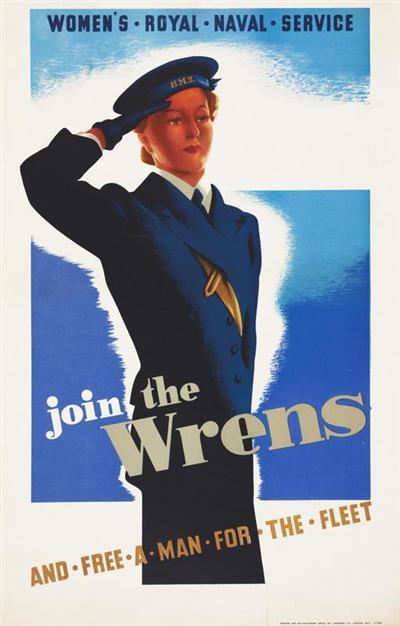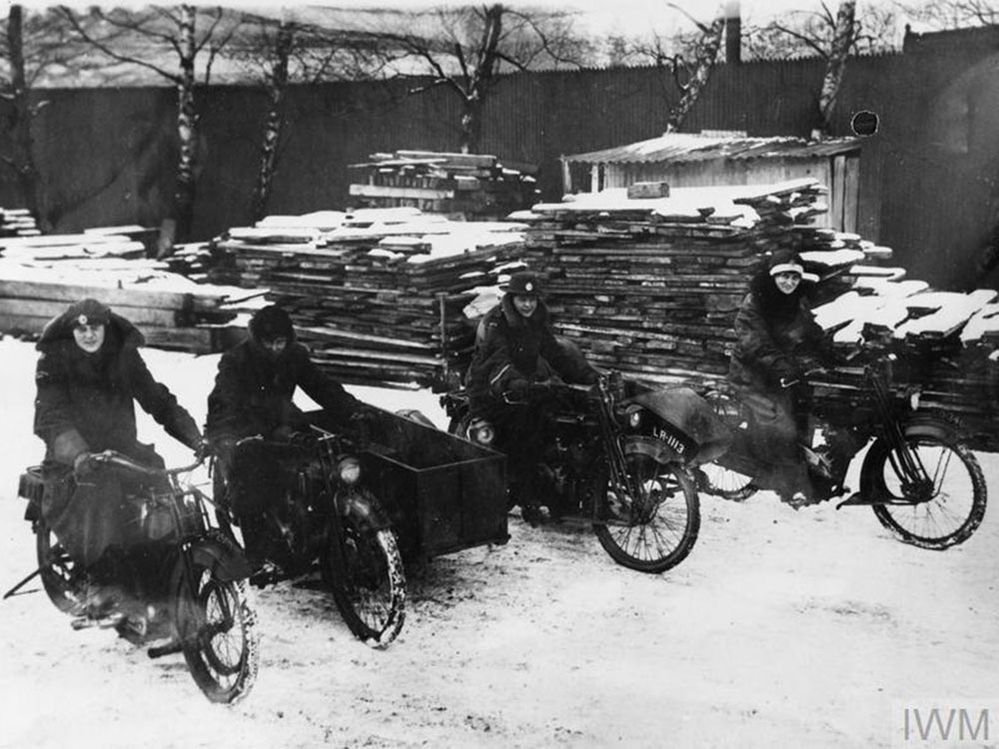
Welcome to the Motorcycle Coasters® Newsletter!

In this edition:
The Motorcycle Coasters® NEW YEAR SALE IS GOING ON NOW!
Small quantities of Motorcycle Coasters® available
Motorcycling History: Women's Royal Naval Service Dispatch Riders
Back issues of the Motorcycle Coasters® Newsletter
Connect with us on social media
-- Motorcycle Coasters® Newsletter Vol. 4, No. 1 --

The Motorcycle Coasters® NEW YEAR SALE IS GOING ON NOW!
SAVE $22 MINIMUM !!
FREE SHIPPING -- AND this may be combined with our other discounts!
-- Through January 2020, we are offering FREE SHIPPING on orders for Motorcycle
Coasters®!
-- The free shipping may be combined with our other discounts:
Military Discount, Safety Training Discount, Charitable Event Discount, Memorial Discount
-- Orders must be paid by January 31, 2020
-- Details here:
Motorcycle Coasters® NEW YEAR SALE
Small quantities of Motorcycle Coasters®
available
Small quantities of un-printed samples of Motorcycle Coasters® are available at
eBay.
Our listings offer ten color choices! See our color samples here.
At eBay, you can buy small quantities of Motorcycle Coasters® for as low as $1.50 each!
All our listings at eBay feature FREE SHIPPING!
Click the eBay logo below to see our listings.
Motorcycling History: Women's Royal Naval Service Dispatch Riders
|
The WRNS (Wrens)
The Women's Royal Naval Service
(WRNS), popularly and officially known as the Wrens, was the women's
branch of the United Kingdom's Royal Navy. First formed in 1917 for the
World War I, it was disbanded in 1919, then revived in 1939 at the
beginning of the World War II, remaining active until integrated into
the Royal Navy in 1993. Job
duties of women enlisted in the WRNS included cooks, clerks, wireless
telegraphers, radar plotters, weapons analysts, range assessors,
electricians, and air mechanics.
They were probably most famous, however, for serving as dispatch
riders.
WWI and WWII
Once WWI (“the war to end all wars”) ended, the WRNS, nicknamed the “Wrens,” was officially disbanded in 1919. Enlisted women returned to their families because other occupational options for them at the time were few.
Twenty years later, by September 1939, Hitler’s ambitions were evident and the war in Europe was escalating. Great Britain and her allies had declared war on Germany. The Wrens were activated once more. Dame Vera Laughton-Matthews, daughter of a prominent naval historian and mother of three who herself served as a Wren from 1917 to 1919, was named director of the organization. All able-bodied seamen were needed in the Royal Navy, and the women’s auxiliary adopted the famous slogan “Join the Wrens and Free a Man for the Fleet.” By the end of 1939, the Wrens totaled 3,000. By war’s end, the number of women who served in the British Royal Navy would balloon to almost 75,000.
The Dispatch Riders
As WWII progressed and more men were sent to fight, their jobs on the home front fell to the willing hands of their wives, girlfriends, daughters, and sisters. Many women and young girls, with aspirations to serve their country, signed up to become Wrens. At first, Wrens performed jobs traditionally done by non-enlisted women, such as cooking and typing. Eventually, needs dictated a much longer list of “allowed duties” for Wrens. In addition to those mentioned in the opening paragraph, some Wrens were pilots and were flying transport planes by the end of the war. One of the most hazardous jobs a Wren could be assigned was that of the motorcycle dispatch rider.
The primary role of a dispatch rider was to ferry orders and messages between the Royal Navy and admiralty’s offices and bases. They worked in sometimes harrowing conditions, including during Blitzkrieg bombing campaigns. They also operated 247/ and rode motorcycles in any kind of weather. Because all available men were required on the front lines, by 1940 all the navy’s dispatch riders were women.
Initially, the Royal Navy recruited only proven riders, mostly competitors from local race circuits such as Brooklands. Soon, pioneering women who had ridden Harley-Davidsons or Velocettes in reliability trials or racing events in the pre-war motorcycle boom joined the ranks of the Wrens. Another part of the reason these women were recruited were the demands of the early motorcycles. These women needed, in addition to their ability to ride, the knowledge to perform basic maintenance on their bikes – checking oil and tire pressure, changing flats, and repairing or replacing chains. Wren dispatch riders were not ladies who worried about getting grease underneath their fingernails. As the war progressed, the Navy had run out of experienced riders and began training women to be dispatch riders. Recruits were taught basic riding skills, evasive driving skills (for evading bombs), and basic motorcycle maintenance.
British manufacturers were quick to build machines for the war effort. Several models were used by the Wrens. BSA’s lightweight 250cc C models were initially introduced in 1938, starting with the single-cylinder side-valve C10. Triumph, at the time headquartered in Coventry (a little less than 100 miles northwest of London), produced the 3HW, a side-valve motorcycle expressly made for military service. It used a four-stroke, single-cylinder engine. Royal Enfield joined the war effort with its 350cc single-cylinder side-valve WD/C (the WD standing for war department) and later with the overhead-valve WD/CO model. None of these motorcycles were particularly fast, but they were light and simple to operate, perfect for England’s dodgy country roads.
Acts of heroism were not uncommon. One such story involved Wren Pamela McGeorge. On April 22, 1941 McGeorge was carrying an urgent message to a command post at the Devonport, Plymouth, shipyards. She got caught in a bombing raid and was blown off her bike. Incredibly, she was uninjured. She left the destroyed motorcycle by the side of the road, running a half mile to her headquarters to deliver the message with bombs falling around her. Immediately after, she volunteered to go out again. For her bravery, McGeorge received the British Empire Medal.
During World War II, almost 100 dispatch riders gave their lives during active duty. The Wrens continued in active service until 1993, when they were officially integrated into the naval branch of Britain’s military. |

A dispatch rider on a 250cc BSA C10 receives her orders.


|
Back issues of our newsletter are available at the
Motorcycle Coasters® - Newsletter Archive. They are available to download as PDF files or can be viewed online (no download required). |
The Motorcycle Coasters® Newsletter is published by Crown Advertising.
You can unsubscribe from the Motorcycle Coasters® Newsletter by clicking this link: getyours@motorcyclecoaster.com

# # #